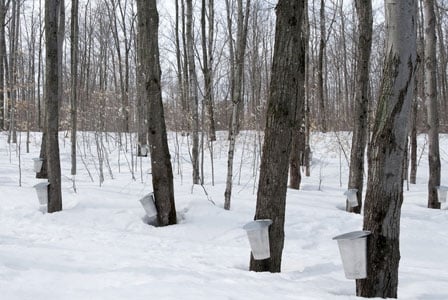
A new report based on 50 years of climate data suggests were not taking into account all the concomitant effects of climate change, leaving us unprepared to manage them.
Ecologists everywhere are monitoring, with concern, the effects of climate change on our delicate ecosystems. One such group has reviewed 50 years of data collected in the Hubbard Brook Experimental Forest located in the White Mountains of New Hampshire. Their conclusions include a sober warning: current climate change models don’t tell the whole story, leaving us unprepared to predict and manage the effects.
A complex ecosystem
The researchers have just published their findings in the December 2012 issue of BioScience. In their report, they cite a long list of changes brought about by warmer temperatures in the area which house bird and animal species from black-capped chickadees to moose and tree species from beech to sugar maple.
The White Mountains are located within the northern hardwood forest region, an area that comprises the northern US from New England to Minnesota and southeastern and south central Canada.
These areas are blessed with some of the most beautiful fall foliage in the world, with tourism rates attesting to its attraction. Another important economic byproduct of these forests is maple syrup—not just a delicious and healthy sweetener, but also a significant Canadian cultural icon.
Current climate models leave important things out
According to the BioScience article’s lead author, Dr. Peter Groffman, microbial ecologist at the Cary Institute Ecosystem Studies, “Climate change plays out on a stage that is influenced by land-use patterns and ecosystem dynamics. We found that global climate models omit factors critical to understanding forest response, such as hydrology, soil conditions, and plant-animal interactions.”
Effects of climate change in the region
Some of the obvious effects that researchers found in the data included
- earlier spring with snowpacks melting two weeks earlier
- later fall
- shorter, milder winters
- warmer temperatures overall
- increased rainfall
- decreased snowfall
What do these effects mean?
Though these effects have been known for some time, the current research has illuminated the combination of impacts and their consequences that haven’t been accounted for in current climate change models.
- Lighter snowfall leaves soil exposed to foraging by deer and other animals, leading to damage to young trees and spreading of a parasite lethal to moose.
- Exposed soils also leave tree roots vulnerable to damage from freezing.
- Frozen soil kills grubs and other soil invertebrates that provide nutrients to the soil and food sources for local bird populations.
- Reduced snowpack makes travel difficult for logging companies who use snow-packed roads to move trees.
- Reduced snowfall reduces attendance at ski resorts in the area.
- Milder winters spread pests and pathogens.
- Snowpack melt occurs at least two weeks earlier than spring plant growth, leading to a dormant period and loss of nutrients in the soil.
- Warmer winter temperatures reduce sap yield from sugar maples.
Groffman concludes, “Managing the forests of the future will require moving beyond climate models based on temperature and precipitation, and embracing coordinated long-term studies that account for real-world complexities.”
With the steady erosion of environmental protections as the federal government continues to gut funding and change policies, this warning may fall on deaf Canadian ears.

